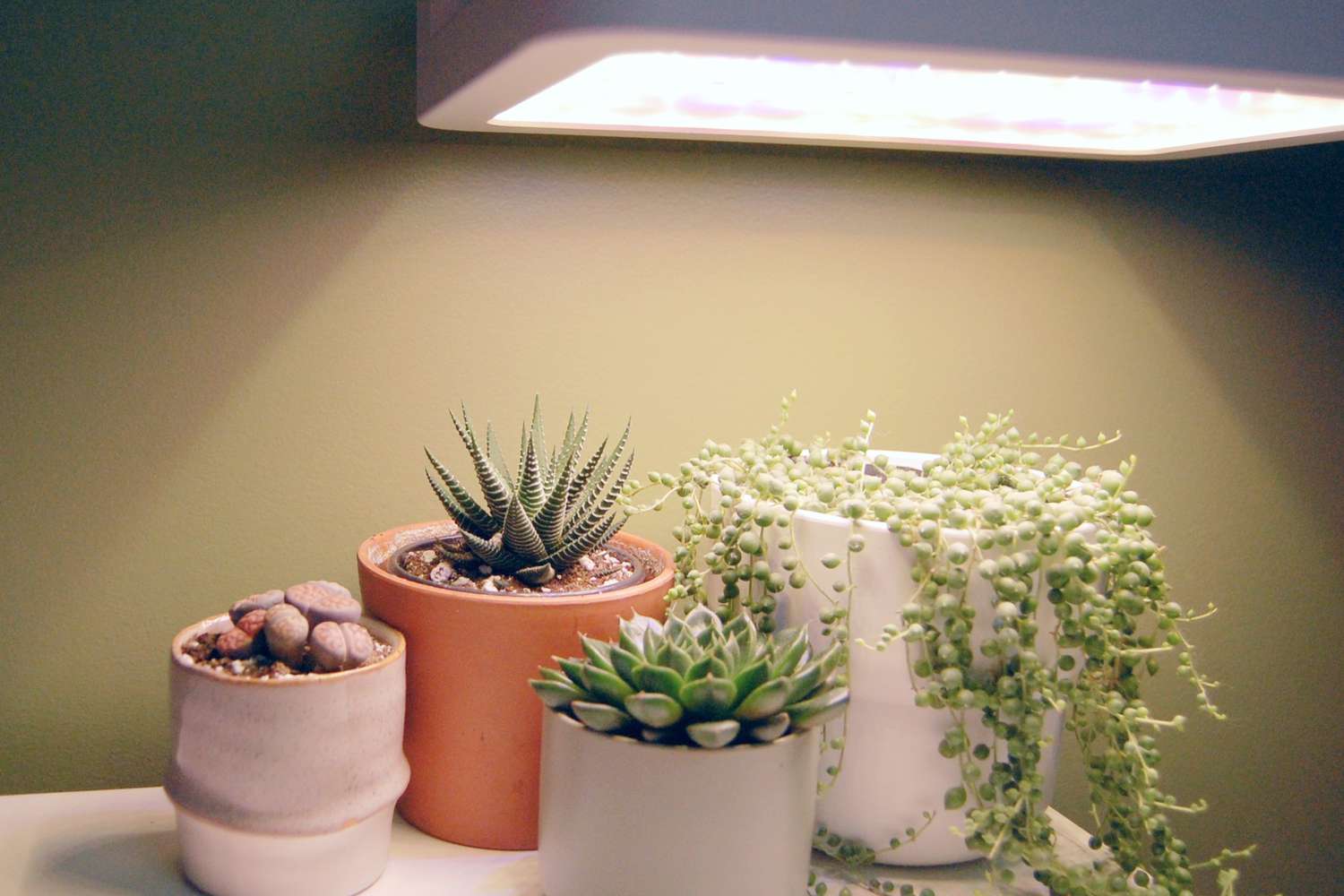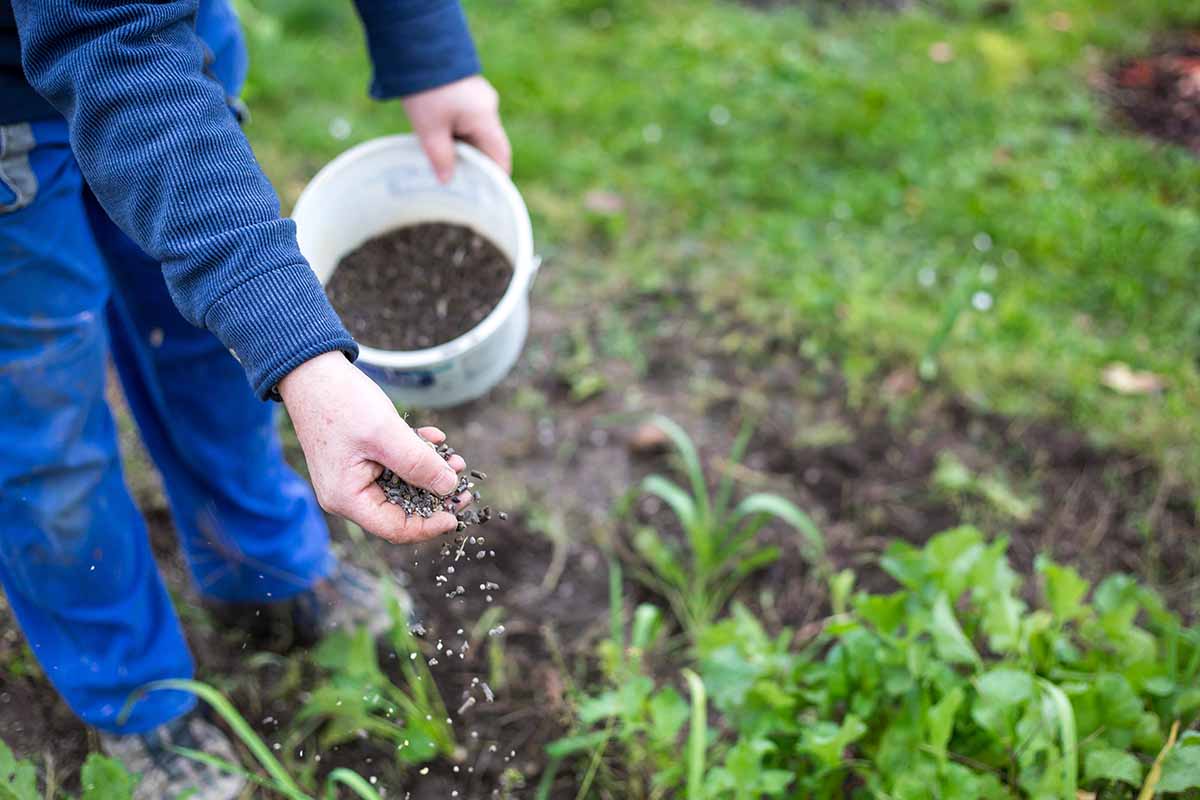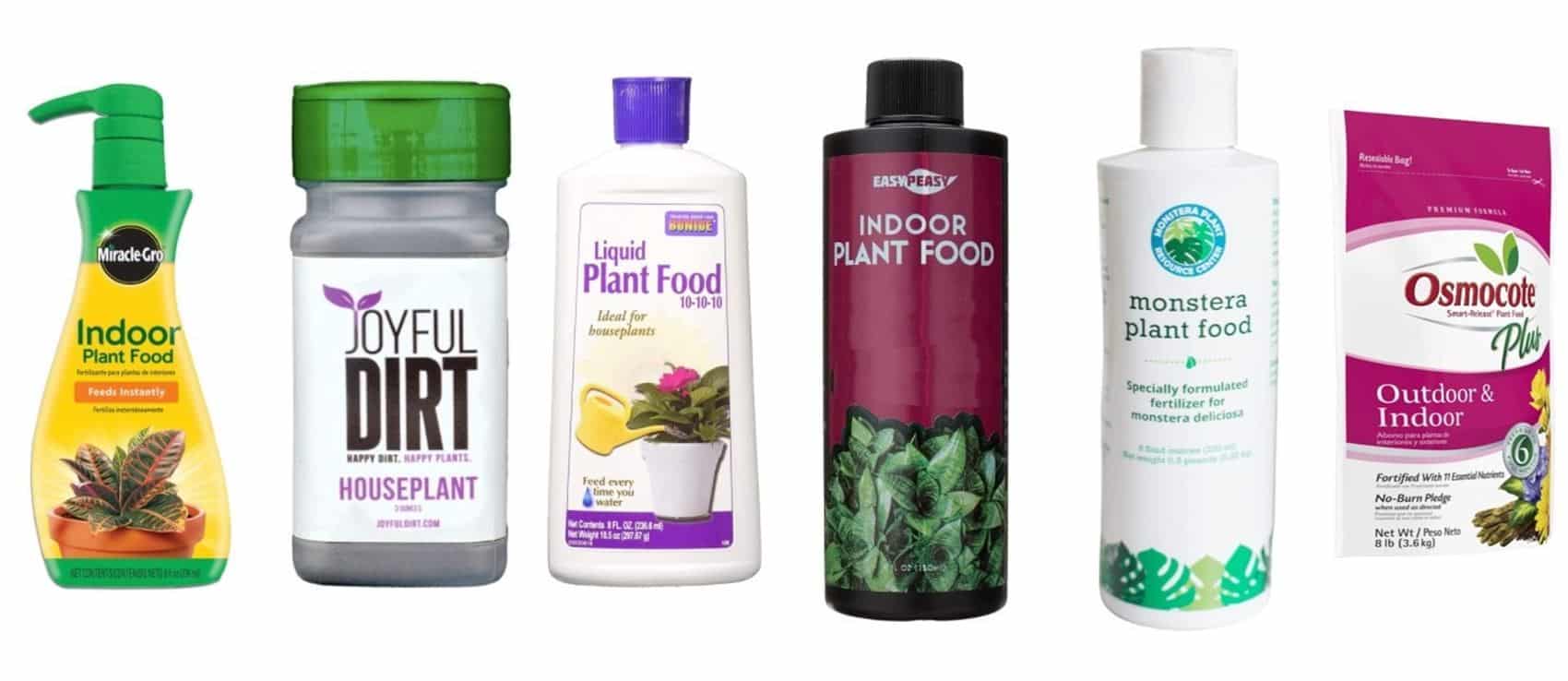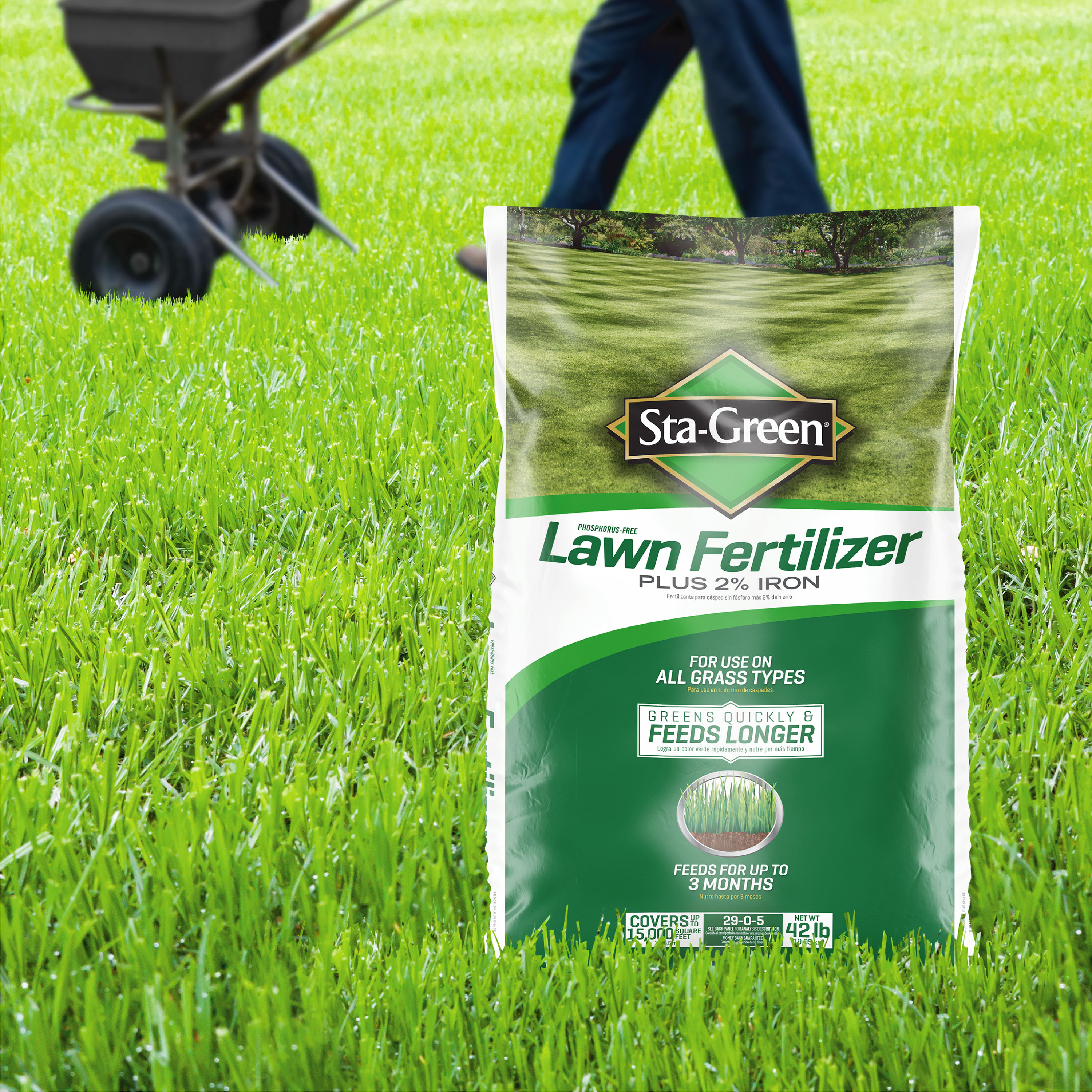Home>Types of Gardening>Ornamental Gardening>What Is The Best Fertilizer For Cactus And Succulents
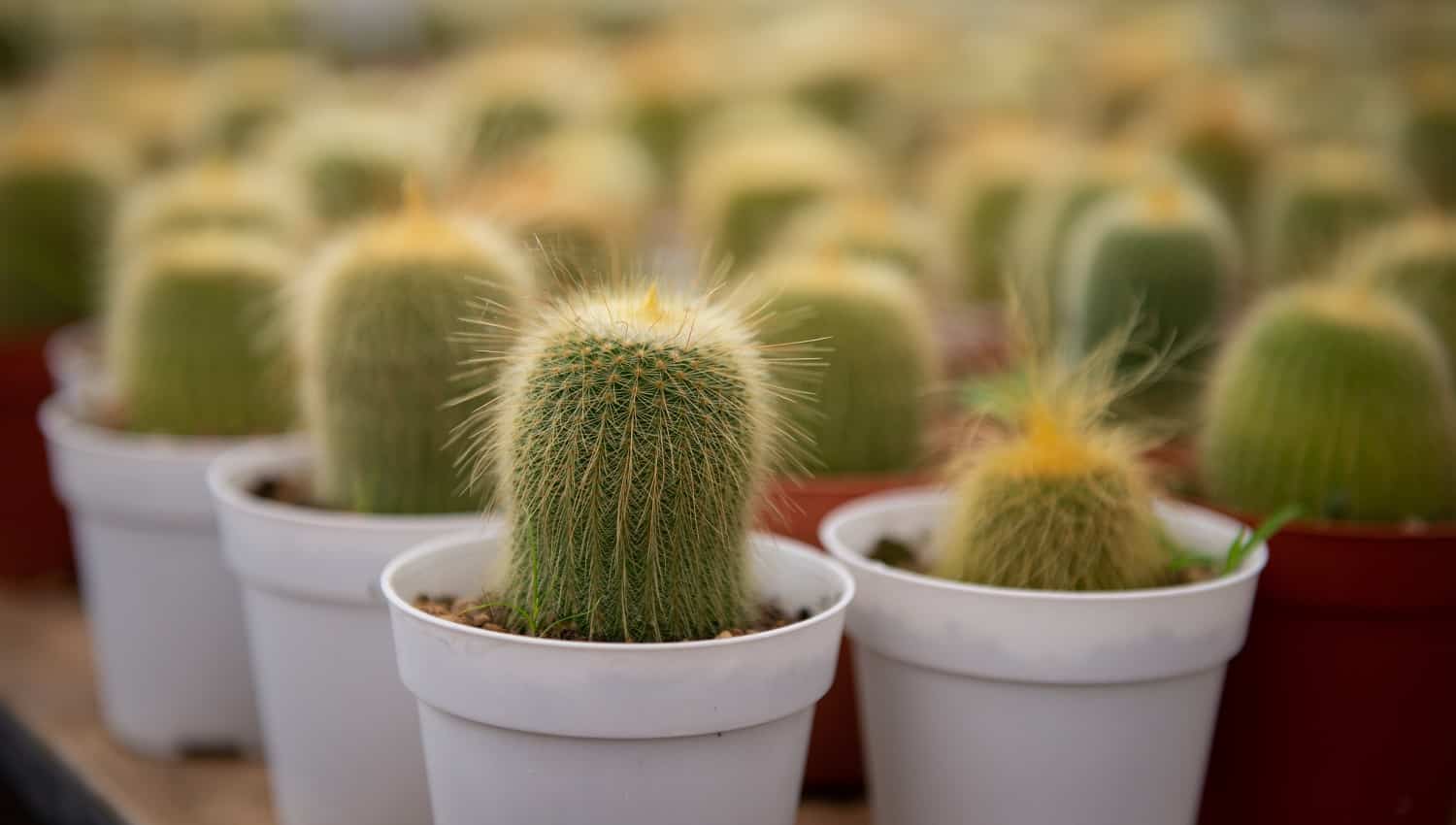

Ornamental Gardening
What Is The Best Fertilizer For Cactus And Succulents
Modified: January 22, 2024
Discover the best fertilizer for cactus and succulents in ornamental gardening. Optimize growth and promote vibrant, healthy plants with our expert recommendations.
(Many of the links in this article redirect to a specific reviewed product. Your purchase of these products through affiliate links helps to generate commission for Chicagolandgardening.com, at no extra cost. Learn more)
Table of Contents
- Introduction
- Importance of Choosing the Right Fertilizer
- Understanding the Nutritional Needs of Cactus and Succulents
- Factors to Consider When Choosing Fertilizer
- Organic Fertilizer Options for Cactus and Succulents
- Inorganic Fertilizer Options for Cactus and Succulents
- Best Fertilizer Brands for Cactus and Succulents
- Tips for Proper Fertilizer Application
- Common Mistakes to Avoid when Fertilizing Cactus and Succulents
- Conclusion
Introduction
Ornamental gardening is a rewarding hobby that allows us to bring beauty and life into our outdoor spaces. Among the many plant options available, cactus and succulents have grown in popularity due to their unique shapes, vibrant colors, and ability to thrive in arid conditions. However, like all plants, cactus and succulents require proper care, including the use of the right fertilizer.
Choosing the best fertilizer for cactus and succulents is crucial for their overall health and longevity. These plants have specific nutritional needs that must be met to ensure they grow and bloom to their full potential. In this article, we will explore the importance of selecting the correct fertilizer and provide valuable insights on how to choose the right one for your precious plants.
While cactus and succulents are known for their ability to survive in harsh conditions, they still require essential nutrients, albeit in smaller quantities. Fertilizers are formulated to provide these necessary nutrients, ensuring the plants receive the fuel they need to grow, develop strong roots, and produce vibrant flowers.
Choosing the right fertilizer for your cactus and succulents can be a daunting task, especially with the plethora of products available in the market. Factors such as the plant’s age, size, specific nutritional requirements, and the growing medium need to be considered. Additionally, you may have a personal preference for organic or inorganic fertilizers, each with its own advantages.
In the following sections, we will delve into the nutritional needs of cactus and succulents, explore the factors to consider when selecting fertilizer, highlight both organic and inorganic fertilizer options, and provide recommendations on some of the best fertilizer brands. We will also discuss how to properly apply fertilizer and common mistakes to avoid. By the end of this article, you will be equipped with the knowledge to give your cactus and succulents the nutrition they need to thrive.
Importance of Choosing the Right Fertilizer
Choosing the right fertilizer for your cactus and succulents is of utmost importance for their overall health and vitality. These plants have specific nutritional requirements that must be met in order for them to thrive. By providing the appropriate fertilizer, you can ensure that your cactus and succulents receive the essential nutrients they need to grow, bloom, and withstand various environmental conditions.
One of the key benefits of using the right fertilizer is promoting robust growth. Cactus and succulents, despite their hardy nature, still require a balanced supply of nutrients to develop strong roots, sturdy stems, and healthy foliage. The right fertilizer will provide these essential nutrients, such as nitrogen, phosphorus, and potassium, in the appropriate ratios to support their growth.
Furthermore, the right fertilizer can enhance the blooming capabilities of your cactus and succulents. Many species of cactus and succulents produce stunning flowers, and proper fertilization can help stimulate and prolong their blooming period. Fertilizers rich in phosphorus and potassium are particularly beneficial for flower production, as they promote bud formation and improve flower color and size.
In addition, using the right fertilizer can help improve the overall resilience and stress tolerance of your cactus and succulents. These plants are often exposed to adverse environmental conditions, such as heat, drought, and poor soil quality. By providing them with the right nutrients, you can enhance their ability to withstand these conditions and reduce the risk of damage or disease.
Another advantage of choosing the right fertilizer is preventing nutrient deficiencies or excesses. Cactus and succulents are susceptible to specific nutrient imbalances, such as nitrogen or phosphorus deficiencies. By selecting a fertilizer formulated specifically for these plants, you can prevent these detrimental conditions and ensure that your plants receive a well-rounded nutrient supply.
Finally, choosing the right fertilizer can contribute to the overall sustainability of your gardening practices. Opting for organic fertilizers, which are derived from natural sources, can help minimize the environmental impact of your gardening activities. Organic fertilizers also tend to release nutrients slowly over time, providing a more sustainable and long-term solution for your cactus and succulents.
Overall, choosing the right fertilizer for your cactus and succulents is vital for their growth, flowering, stress tolerance, and overall health. By providing the appropriate nutrients, you can ensure that your plants not only survive but thrive in your care.
Understanding the Nutritional Needs of Cactus and Succulents
In order to choose the right fertilizer for your cactus and succulents, it is important to have a clear understanding of their nutritional needs. While these plants are known for thriving in arid conditions, they still require certain essential nutrients to support their growth and overall health.
One key aspect to consider when it comes to the nutritional needs of cactus and succulents is their low nutrient requirement. These plants have evolved to survive in nutrient-poor soils, where excessive nutrient availability could actually be harmful to them. In fact, excessive nitrogen can lead to weak and elongated growth, making the plants more susceptible to diseases and pests.
The primary macronutrients that cactus and succulents require are nitrogen (N), phosphorus (P), and potassium (K). Nitrogen is responsible for promoting healthy leaf and stem growth, while phosphorus is essential for root development, flowering, and fruiting. Potassium helps improve the plant’s overall resilience, enabling it to withstand environmental stresses.
In addition to the macronutrients, cactus and succulents also require secondary macronutrients, including calcium (Ca), magnesium (Mg), and sulfur (S). These nutrients are needed in smaller quantities but play important roles in various physiological processes. Calcium helps strengthen cell walls, magnesium is involved in chlorophyll production, and sulfur is important for the synthesis of proteins and enzymes.
Micro nutrients, such as iron (Fe), manganese (Mn), zinc (Zn), copper (Cu), and boron (B), are also essential for the healthy growth of cactus and succulents. While they are required in trace amounts, their deficiency can lead to various growth abnormalities and impair the plant’s overall health and appearance.
It is important to note that the specific nutritional needs can vary between different species of cactus and succulents. Different plants may have varying levels of nutrient requirements, and it is essential to do some research to determine the specific needs of the plants you are caring for. However, in general, cactus and succulents prefer a slightly acidic to neutral pH level (around 6.0 to 7.0) in the soil.
Understanding the nutritional needs of your cactus and succulents is crucial in selecting the right fertilizer. By providing the necessary nutrients in the appropriate ratios, you can ensure that your plants receive the fuel they need to grow, bloom, and thrive. In the next section, we will explore the factors to consider when choosing fertilizer for cactus and succulents.
Factors to Consider When Choosing Fertilizer
When it comes to choosing the right fertilizer for your cactus and succulents, several factors should be taken into consideration. These factors will help ensure that you select a fertilizer that meets the specific nutritional requirements of your plants and supports their growth and overall health.
1. Nutrient Composition:
One of the most important factors to consider is the nutrient composition of the fertilizer. Look for a fertilizer that provides a balanced ratio of nitrogen (N), phosphorus (P), and potassium (K). For cactus and succulents, a fertilizer with a lower nitrogen content is preferable, as excessive nitrogen can lead to weak growth.
2. Slow-release vs. Immediate-release:
You may also want to consider whether you prefer a slow-release or immediate-release fertilizer. Slow-release fertilizers release nutrients gradually over time, providing a continuous supply to the plants. Immediate-release fertilizers, on the other hand, deliver nutrients quickly but may require more frequent application.
3. Organic vs. Inorganic:
Deciding between organic and inorganic fertilizer is another important factor to consider. Organic fertilizers are derived from natural sources and tend to release nutrients more slowly. They also improve soil health and microbial activity. Inorganic fertilizers are synthetically made and provide nutrients in a readily available form.
4. Growing Medium:
The type of growing medium you use can impact fertilizer selection. If you are growing your cactus and succulents in a well-draining soil mix, a fertilizer that complements the soil’s nutrient content may be sufficient. However, if you are using a soilless mix or growing them in containers, you may need to provide additional nutrients through fertilizer.
5. Plant Stage and Size:
The stage of growth and size of your cactus and succulents should also be taken into account. Younger plants may require a fertilizer with a lower concentration of nutrients, while mature and larger plants may benefit from a more concentrated formula.
6. Environmental Conditions:
Consider the environmental conditions in which your cactus and succulents are placed. If they are exposed to high temperatures or intense sunlight, a fertilizer with added micronutrients like iron and manganese can help prevent nutrient deficiencies caused by these stressors.
7. Personal Preference:
Lastly, consider your personal preference and gardening philosophy. Some gardeners may have a preference for organic fertilizers due to their environmental benefits, while others may opt for the convenience and quick results provided by inorganic fertilizers.
By considering these factors, you can make an informed decision and choose a fertilizer that will meet the specific needs of your cactus and succulents. In the following sections, we will explore both organic and inorganic fertilizer options that are suitable for these plants.
Organic Fertilizer Options for Cactus and Succulents
Organic fertilizers offer a natural and environmentally-friendly option for providing essential nutrients to your cactus and succulents. These fertilizers are derived from natural sources and provide a slower release of nutrients, promoting sustained and balanced growth. Here are some organic fertilizer options that are suitable for cactus and succulents:
1. Compost:
Compost is a popular organic fertilizer choice as it offers a rich source of nutrients and helps improve soil structure. You can create your own compost by incorporating organic materials such as kitchen scraps, yard waste, and dried leaves. When using compost as a fertilizer, ensure that it is well-aged and has broken down sufficiently to avoid adding excess nutrients to the soil.
2. Worm Castings:
Worm castings, also known as vermicompost, are the waste products produced by worms during the decomposition process. They are nutrient-rich and contain beneficial microorganisms that promote soil health. Worm castings provide a well-balanced supply of macro and micronutrients, making it a great organic fertilizer option for cactus and succulents.
3. Seaweed Extract:
Seaweed extract is derived from seaweed and is rich in minerals, vitamins, and plant growth hormones. It helps stimulate root growth, improve nutrient uptake, and enhance plant resilience. Seaweed extract can be applied as a foliar spray or diluted in water and used for watering your cactus and succulents.
4. Fish Emulsion:
Fish emulsion is made from the byproducts of fish processing and is a rich source of nitrogen, phosphorus, and trace elements. It provides readily available nutrients to your cactus and succulents and promotes vigorous growth. Fish emulsion can be diluted in water and applied directly to the soil or used as a foliar spray.
5. Bone Meal:
Bone meal is derived from ground animal bones, making it a great source of phosphorus and calcium. It supports root development and encourages blooming in cactus and succulents. When using bone meal, apply it during the initial stages of growth, as it takes time for the phosphorus to be released and absorbed by the plants.
6. Manure:
Well-rotted animal manure, such as horse or poultry manure, can be used as an organic fertilizer. It is nutrient-rich and improves soil fertility. However, it is important to use manure that has aged and decomposed properly to avoid burning the roots of your cactus and succulents.
When using organic fertilizers, it is important to follow the recommended application rates to avoid over-fertilization, as excess nutrients can be detrimental to cactus and succulents. Combine organic fertilizers with good watering practices and proper sunlight exposure to ensure optimal growth and health of your plants.
Inorganic Fertilizer Options for Cactus and Succulents
If you prefer a more direct and immediate nutrient supply or need to address specific deficiencies, inorganic fertilizers are a suitable option for your cactus and succulents. These fertilizers are formulated with synthetic compounds that provide a readily available source of nutrients. Here are some inorganic fertilizer options that are suitable for cactus and succulents:
1. Complete Fertilizers:
Complete fertilizers, often labeled as NPK fertilizers, contain nitrogen (N), phosphorus (P), and potassium (K) in balanced ratios. They are readily available and provide a balanced supply of essential macronutrients to your cactus and succulents. Look for a complete fertilizer with a higher ratio of phosphorus (P) and potassium (K), as these nutrients are vital for promoting root development and blooming.
2. Liquid Fertilizers:
Liquid fertilizers, such as water-soluble powders or concentrated liquids, offer a quick and easy way to provide nutrients to your cactus and succulents. They are typically mixed with water and applied directly to the soil or used as a foliar spray. Liquid fertilizers allow for better control over the nutrient concentration, making them an efficient option for precise feeding.
3. Controlled-Release Fertilizers:
Controlled-release fertilizers, also known as slow-release fertilizers, provide a gradual supply of nutrients over an extended period. They consist of coated granules that release nutrients slowly, based on temperature and moisture levels. These fertilizers ensure a steady nutrient supply to your cactus and succulents, reducing the risk of over-fertilization and nutrient leaching.
4. Specially Formulated Fertilizers:
Some fertilizer formulations are specifically designed for cactus and succulents, taking into account their unique nutrient requirements. These formulations may contain additional trace elements and micronutrients that are beneficial for the overall growth and health of your plants. Check the labels of these specially formulated fertilizers to ensure they align with the specific needs of your cactus and succulents.
5. Granular Fertilizers:
Granular fertilizers are solid, slow-release pellets or beads that are applied to the soil. They release nutrients gradually as they break down over time. Granular fertilizers are convenient to use, as they can be evenly spread around the base of your cactus and succulents. However, it’s important to follow the recommended application rates to avoid over-fertilization.
6. Specialty Fertilizers:
There are also specialty fertilizers available that cater to specific needs, such as bloom boosters or root stimulators. These fertilizers are formulated to provide the necessary nutrients to enhance particular aspects of plant growth, such as flower production or root development. Consider using these specialty fertilizers during specific growth stages to support the targeted needs of your cactus and succulents.
When using inorganic fertilizers, it’s important to follow the instructions provided by the manufacturer. Proper application rates and timings are crucial to prevent over-fertilization and to ensure the health of your cactus and succulents. Remember to water your plants adequately before and after fertilization to prevent root burn.
Best Fertilizer Brands for Cactus and Succulents
When it comes to choosing the best fertilizer for your cactus and succulents, there are several reputable brands that offer high-quality products specifically formulated for the unique nutritional needs of these plants. Here are some of the top fertilizer brands that are recommended for cactus and succulents:
1. Espoma:
Espoma is a well-known brand that offers organic and natural fertilizers. Their “Cactus!” liquid fertilizer is specifically formulated for cacti and succulents, providing a balanced blend of nutrients to support healthy growth. Espoma products are derived from organic ingredients and are safe for both indoor and outdoor plants.
2. Miracle-Gro:
Miracle-Gro is a popular brand that offers a range of fertilizers for various plant types. Their “Succulent Plant Food” is designed for succulents, including cactus species. It provides a balanced nutrition to promote healthy growth and vibrant blooms. Miracle-Gro fertilizers are available in both liquid and granular forms.
3. Dyna-Gro:
Dyna-Gro is known for its comprehensive line of high-quality fertilizers. Their “Foliage-Pro” liquid fertilizer is suitable for cacti and succulents, promoting lush foliage and overall plant health. Dyna-Gro fertilizers are formulated to provide essential macronutrients and micronutrients, ensuring optimal growth and vitality.
4. Jack’s Classic:
Jack’s Classic is a brand that offers water-soluble fertilizers that are suitable for a wide range of plants, including cactus and succulents. Their “Classic All Purpose” fertilizer is widely used and provides balanced nutrition for healthy growth. Jack’s Classic fertilizers are easy to use and are quickly absorbed by the plants.
5. Jobe’s Organics:
Jobe’s Organics is committed to providing organic and natural fertilizers. Their “Organics Succulent & Cactus Granular Fertilizer” is formulated with beneficial microbes and organic materials to promote strong roots and vibrant blooms. Jobe’s Organics fertilizers are slow-release, ensuring a steady nutrient supply over time.
6. Schultz:
Schultz is known for its range of plant care products, including fertilizers. Their “Cactus Plus” liquid fertilizer is designed specifically for cacti and succulents, providing a balanced blend of nutrients to support healthy growth and vibrant blooms. Schultz fertilizers are easy to use and suitable for both indoor and outdoor plants.
These are just a few examples of the best fertilizer brands for cactus and succulents. When selecting a fertilizer, consider factors such as nutrient composition, release rate, and your personal preferences. Always follow the package instructions for application rates and frequency to ensure the best results for your plants.
Tips for Proper Fertilizer Application
Proper fertilizer application is essential to ensure that your cactus and succulents receive the right amount of nutrients without causing harm. Here are some helpful tips to guide you in applying fertilizer effectively:
1. Follow the Instructions:
Always read and follow the instructions provided by the fertilizer manufacturer. The instructions will specify the proper application rates, frequency, and any additional guidelines specific to the product.
2. Dilute Concentrated Fertilizers:
If using concentrated liquid or powder fertilizers, make sure to dilute them according to the recommended ratio. Applying concentrated fertilizer directly can lead to nutrient burn, which can damage your cactus and succulents.
3. Apply Fertilizer to Damp Soil:
Apply fertilizer to moist soil, preferably after watering your plants. This helps prevent the fertilizer from directly contacting the roots and reduces the risk of burning. Avoid applying fertilizer to dry soil, as it can be more challenging for the nutrients to be absorbed.
4. Avoid Fertilizing Newly Potted Plants:
Newly potted cactus and succulents need time to acclimate to their new environment. It is best to wait at least a month before applying fertilizer to allow the plants to establish their root systems.
5. Apply Fertilizer Near the Base:
When applying fertilizer, target the area near the base of the plants. Avoid applying fertilizer directly on the leaves, as this can increase the risk of burning or causing damage to the foliage.
6. Water After Fertilization:
After applying fertilizer, give your cactus and succulents a thorough watering. This will help distribute the nutrients throughout the soil and ensure proper absorption. Watering also helps prevent the buildup of excessive salts from the fertilizer.
7. Monitor Plant Response:
Monitor how your cactus and succulents respond to the fertilizer. Look for signs of over-fertilization, such as yellowing leaves, stunted growth, or wilting. If you notice any negative effects, adjust your fertilizer application accordingly.
8. Fertilize During the Growing Season:
It is best to fertilize your cactus and succulents during their active growing season, which is typically in spring and summer. During the dormant period in fall and winter, reduce or cease fertilization as the plants require fewer nutrients.
9. Use a Calendar or Reminder:
To ensure regular and timely fertilization, use a calendar or set reminders to help you keep track of when to apply fertilizer. Consistent and proper fertilization will contribute to the health and vitality of your cactus and succulents.
By following these tips, you can provide your cactus and succulents with the right amount of nutrients while minimizing the risk of nutrient burn or other negative effects. Proper fertilization, combined with other essential care practices, will help your plants thrive and showcase their beauty.
Common Mistakes to Avoid when Fertilizing Cactus and Succulents
Fertilizing cactus and succulents is important for their growth and overall health, but there are some common mistakes that gardeners should avoid to ensure the best results. Understanding and avoiding these mistakes will help prevent damage to your plants and maximize their potential. Here are some common mistakes to be aware of:
1. Over-fertilization:
One of the most common mistakes is over-fertilizing. Cactus and succulents have low nutrient requirements, and excessive fertilizer can lead to nutrient burn, causing the tips of the leaves to turn brown and become desiccated. Always follow the recommended application rates and avoid applying fertilizer too frequently.
2. Using the Wrong Type of Fertilizer:
Using the wrong type of fertilizer is another common mistake. It’s important to choose a fertilizer that is specifically formulated for cactus and succulents. General-purpose fertilizers or those designed for other plant types may contain higher levels of nitrogen, which can be detrimental to these plants.
3. Applying Fertilizer to Dry Soil:
Applying fertilizer to dry soil is a mistake that can lead to nutrient imbalances and potential damage to the roots. Make sure to water your cactus and succulents before applying fertilizer. The moisture will help the plants absorb the nutrients more effectively.
4. Ignoring Soil Drainage:
Cactus and succulents require well-draining soil to prevent root rot. Fertilizer should only be applied when the soil is dry or slightly moist. Avoid fertilizing if the soil is excessively wet, as it can exacerbate drainage issues and hinder the plant’s ability to absorb nutrients.
5. Neglecting Proper Watering:
Watering practices go hand in hand with fertilization. Before applying fertilizer, ensure that your plants are adequately watered. This helps prevent fertilizer burn by diluting the fertilizer and reducing its concentration.
6. Fertilizing Dormant Plants:
During the dormant period, cactus and succulents have significantly reduced nutrient requirements. Fertilizing them during this time can be counterproductive. Avoid fertilizing dormant plants and focus on providing adequate light and temperature conditions instead.
7. Applying Fertilizer to Unestablished Plants:
Newly propagated or recently repotted cactus and succulents need time to establish their root systems. Avoid fertilizing them immediately after potting or propagation. Allow them to acclimate and establish themselves before introducing fertilizer.
8. Neglecting Nutrient Deficiencies:
While fertilizing is important, it’s equally important to address any existing nutrient deficiencies. If you notice specific symptoms such as yellowing leaves or stunted growth, it may indicate a deficiency. Address these deficiencies by adjusting your fertilizer or using targeted nutrient supplements.
9. Fertilizing in Cold Temperatures:
During the winter months or in colder climates, cactus and succulents have reduced metabolic activity. Fertilizing during cold temperatures can cause fertilizer buildup in the soil, potentially leading to root rot or nutrient toxicity. It’s best to limit fertilization during these times.
By avoiding these common mistakes, you can ensure that your cactus and succulents receive the right amount of nutrients without causing harm. Proper fertilization, combined with other essential care practices, will help your plants thrive and showcase their unique beauty.
Conclusion
Fertilizing cactus and succulents is a crucial aspect of their care routine to ensure optimal growth, vibrant blooms, and overall plant health. By choosing the right fertilizer and applying it correctly, you can provide your plants with the essential nutrients they need to thrive in their unique arid conditions.
Understanding the nutritional needs of cactus and succulents is key when selecting the best fertilizer. These plants have low nutrient requirements, so choosing a fertilizer with a balanced nutrient composition and lower nitrogen content is important. Considering factors such as the stage of plant growth, growing medium, and environmental conditions can help you make an informed decision.
Organic fertilizers, like compost, worm castings, and seaweed extract, offer natural and environmentally-friendly options for providing nutrients to your cactus and succulents. They release nutrients slowly and improve soil health. Inorganic fertilizers, such as complete fertilizers and controlled-release fertilizers, provide readily available nutrients and can address specific deficiencies more directly.
To ensure proper fertilization, follow the instructions provided by the manufacturer, dilute concentrated fertilizers, and apply fertilizer to moist soil. Avoid common mistakes, such as over-fertilization, using the wrong type of fertilizer, and applying fertilizer to dry soil. Keep an eye on plant response, monitor for nutrient deficiencies, and adjust your fertilizer practices accordingly.
Some recommended fertilizer brands for cactus and succulents include Espoma, Miracle-Gro, Dyna-Gro, Jack’s Classic, Jobe’s Organics, and Schultz. These brands offer various organic and inorganic fertilizer options formulated to meet the specific needs of these plants.
In conclusion, by considering the nutritional needs of your cactus and succulents, selecting the right fertilizer, and avoiding common mistakes, you can provide your plants with the necessary nutrients to thrive. Remember to combine proper fertilization with other essential care practices, such as appropriate watering, adequate sunlight, and well-draining soil. With the right care, your cactus and succulents will reward you with their unique beauty and resilience.

